Science & Technology
 An array of little-known chemicals present in marijuana can interact to influence the taste, smell and effect of each unique strain. But, according to new research, the cannabis industry seldom tests for those compounds and knows little about them.
An array of little-known chemicals present in marijuana can interact to influence the taste, smell and effect of each unique strain. But, according to new research, the cannabis industry seldom tests for those compounds and knows little about them.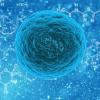 With a National Institutes of Health grant, CU Boulder will be a leader in cryoelectron tomography, a technology that helps visualize in 3-D the fine-structure of intact cells and tissues.
With a National Institutes of Health grant, CU Boulder will be a leader in cryoelectron tomography, a technology that helps visualize in 3-D the fine-structure of intact cells and tissues. Ever wonder why some fireflies flash in harmony? New research sheds light on this beautiful phenomenon and strives to understand how relatively simple insects manage to coordinate such feats of synchronization.
Ever wonder why some fireflies flash in harmony? New research sheds light on this beautiful phenomenon and strives to understand how relatively simple insects manage to coordinate such feats of synchronization.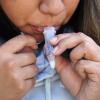 With millions of students returning in the fall, college and university administrators across the country faced an unprecedented challenge this summer: Devise a plan for controlling an airborne virus, easily spread by people with no symptoms, in an environment where thousands of socially active young adults live in close quarters.
With millions of students returning in the fall, college and university administrators across the country faced an unprecedented challenge this summer: Devise a plan for controlling an airborne virus, easily spread by people with no symptoms, in an environment where thousands of socially active young adults live in close quarters.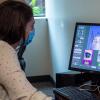 A new effort will explore the role that artificial intelligence may play in the future of education and workforce development.
A new effort will explore the role that artificial intelligence may play in the future of education and workforce development. The center will forge the technological solutions needed to harness quantum information science for discoveries that benefit the world.
The center will forge the technological solutions needed to harness quantum information science for discoveries that benefit the world.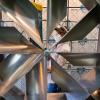 As students return to campus, a mostly behind-the-scenes team of university staff and scientists has been working to make sure that the air they breathe will be as safe as possible.
As students return to campus, a mostly behind-the-scenes team of university staff and scientists has been working to make sure that the air they breathe will be as safe as possible.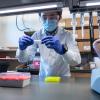 Learn what we know about COVID-19 from some of CU Boulder's top researchers and operational experts, and how they're helping put science into practice for a safer return. Full recordings of the in-depth discussions from a recent webinar series are available.
Learn what we know about COVID-19 from some of CU Boulder's top researchers and operational experts, and how they're helping put science into practice for a safer return. Full recordings of the in-depth discussions from a recent webinar series are available. Jaylon McGhee is researching next-generation wind turbine designs through a prestigious National Science Foundation graduate research fellowship.
Jaylon McGhee is researching next-generation wind turbine designs through a prestigious National Science Foundation graduate research fellowship.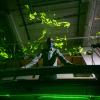 A groundbreaking new international research network led by CU Boulder is aimed at understanding how animals use information from odors in their environment to guide behavior, with far-ranging implications for our understanding of the human brain.
A groundbreaking new international research network led by CU Boulder is aimed at understanding how animals use information from odors in their environment to guide behavior, with far-ranging implications for our understanding of the human brain.


